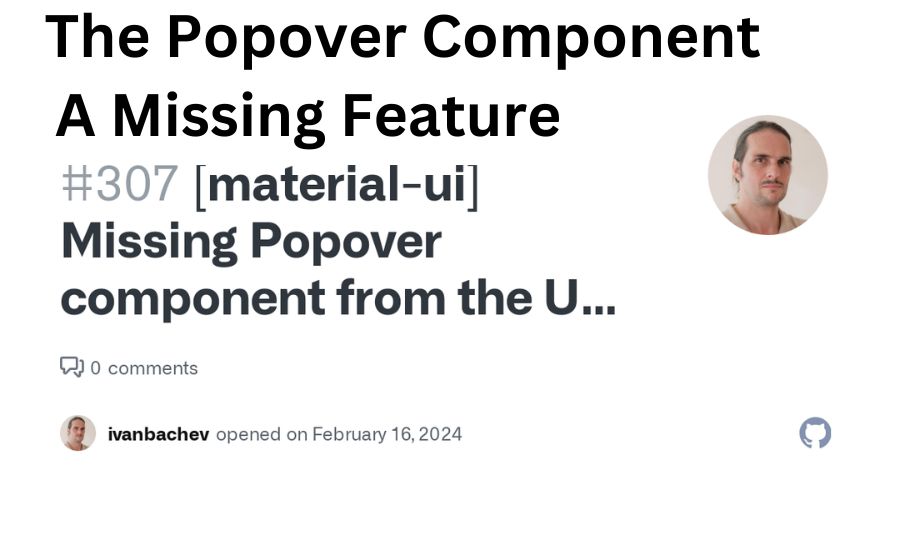If you are working with the PrimeVue UI framework, you might have encountered a situation where the popover does not exist in PrimeVue. This can be frustrating, especially since popovers are a common UI component for displaying contextual information. In this article, we will delve into the PrimeVue popover issue, explore alternatives, and provide workarounds to help you achieve the desired functionality.
What is PrimeVue?

PrimeVue is a powerful UI component library for Vue.js, offering a rich set of components that enhance user experience. With its intuitive API and extensive features, it helps developers create stunning applications quickly. However, even robust libraries can have limitations or missing components, such as the PrimeVue missing popover feature, which is a significant concern for many developers.
PrimeVue Library Features
Before we discuss the popover issue, let’s briefly highlight some key features of the PrimeVue library:
- Rich Component Set: PrimeVue provides various components, including buttons, tables, and forms.
- Theming Support: It offers multiple themes to give your application a unique appearance.
- Accessibility: The components are designed with accessibility in mind, ensuring usability for all users.
- Flexible API: The library has an intuitive API that allows for easy integration with Vue.js applications.
The Popover Component: A Missing Feature

While PrimeVue excels in many areas, one glaring omission is the popover component. Popovers are essential for displaying additional information without navigating away from the current context. They typically show on user interaction, such as hover or click, providing a seamless experience.
PrimeVue Popover Issue
Developers have reported that the PrimeVue popover issue stems from the absence of a dedicated popover component. This has led many to seek alternatives or workarounds to achieve similar functionality. Below are some common challenges faced:
- Lack of Built-in Popover: Without a built-in popover, developers must create custom solutions, which can be time-consuming.
- Integration Difficulties: Trying to integrate existing JavaScript popover solutions may lead to compatibility issues with PrimeVue components.
- Version Compatibility: Depending on the PrimeVue version, some features might not be fully supported, complicating the implementation of alternative solutions.
Exploring PrimeVue Tooltip Alternatives
If you are looking for a temporary fix, consider using the PrimeVue tooltip component. Although tooltips serve a slightly different purpose, they can provide similar functionality for showing brief information. Tooltips can be quickly implemented and offer built-in support in PrimeVue.
Pros and Cons of Using Tooltips
- Pros: Quick to implement, built-in support in PrimeVue, good for brief information.
- Cons: Limited space for content, not suitable for extensive information display.
JavaScript Popover Solutions
Another approach is to use existing JavaScript popover solutions, such as Tippy.js or Popper.js. These libraries provide flexible options for implementing popovers that can easily be integrated with PrimeVue components.
Pros and Cons of Using External Libraries
- Pros: Offers advanced features, customizable, can support various triggers.
- Cons: Requires additional setup, potential overhead in bundle size.
Read more: Alien-skin-software-no-longer-works-in-pain
PrimeVue Modal vs Popover
When deciding between using a modal or a popover, consider the use case:
- Modals are best for displaying critical information or forms that require user interaction.
- Popovers are suitable for context-specific help or quick information without taking up the whole screen.
While PrimeVue provides modal components, the absence of a popover requires you to evaluate your UI design carefully. In scenarios where popovers would enhance user experience, using modals might not always be the best fit.
Implementing a PrimeVue Popover Workaround
If you prefer to stick with PrimeVue components, you can create a custom Popover-like component using existing PrimeVue features. This could involve toggling the visibility of a component on user interaction.
Benefits of Custom Implementations
- Control Over Design: You can customize the appearance and behavior to match your application’s needs.
- Integration: Seamlessly integrates with other PrimeVue components.
Conclusion
The PrimeVue popover issue highlights a gap in functionality that many developers face. While the library excels in various areas, the absence of a dedicated popover component can be a challenge. However, there are multiple pathways to achieve the desired popover functionality, including using tooltips, external libraries, or creating a custom component.
As you explore these options, keep in mind your application’s needs and user experience. The choice of whether to use a modal or a workaround for the missing popover will depend on the context of your application.
Staying Updated with PrimeVue
To keep up with updates regarding PrimeVue documentation, features, and bug fixes, always check the official PrimeVue resources. Staying informed about PrimeVue version compatibility can also help you avoid issues in future development.
If you’re facing specific challenges or need further assistance, consider reaching out to the community or forums dedicated to PrimeVue and Vue.js development. With the right approach, you can effectively implement popover functionality and enhance the user experience of your applications.
Stay informed with the latest news and updates on Discoveressentia.com
